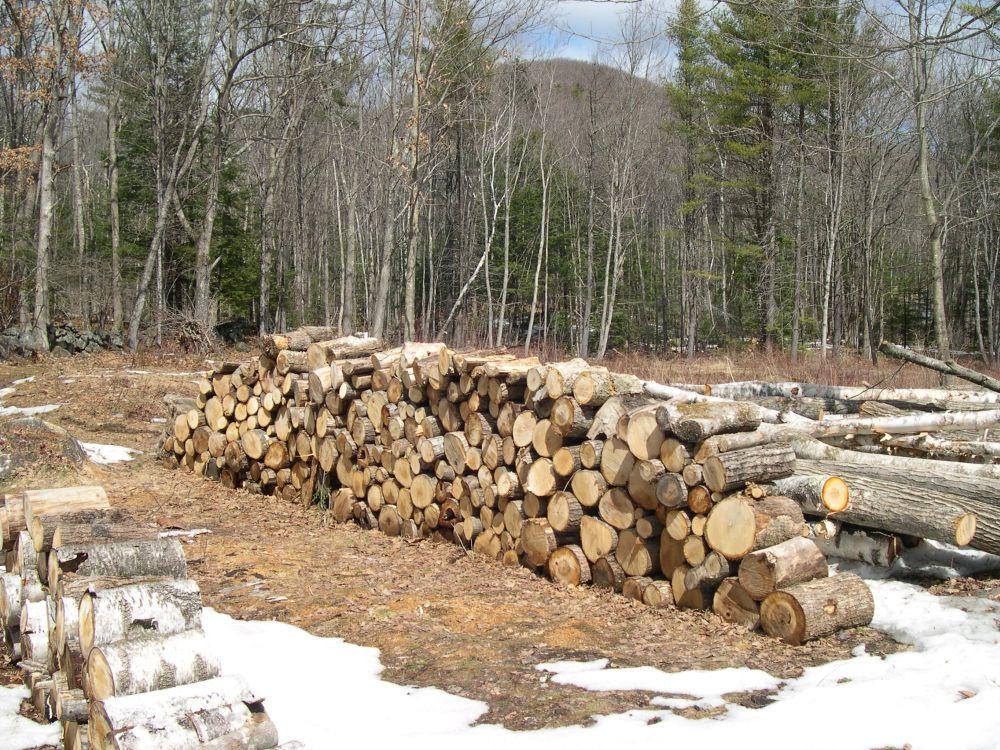- Tags:
- Wood Energy,
- Working Forests

Home cordwood production is a year-round weekend occupation. Keeping ahead of it ensures we burn seasoned, high quality hardwood. (All photos Dave Anderson)
Wood Heat is Good Heat
By February, I calculate the passing of winter by the amount of cordwood remaining in the woodshed. The old farmer’s adage goes: “Half your wood and half your hay you should have left at Groundhog Day.” Fire is ancient; primal. There’s a comforting quality to homegrown wood heat — flickering flames — whether it’s a backyard campfire or for home heating.
What could be more romantic this Valentine’s Day than snuggling fireside? If not snuggling but social distancing, consider how the current Covid-era has more people purchasing small solo stoves or chimineas to warm backyard gatherings with family and friends hanging-out around a fire.
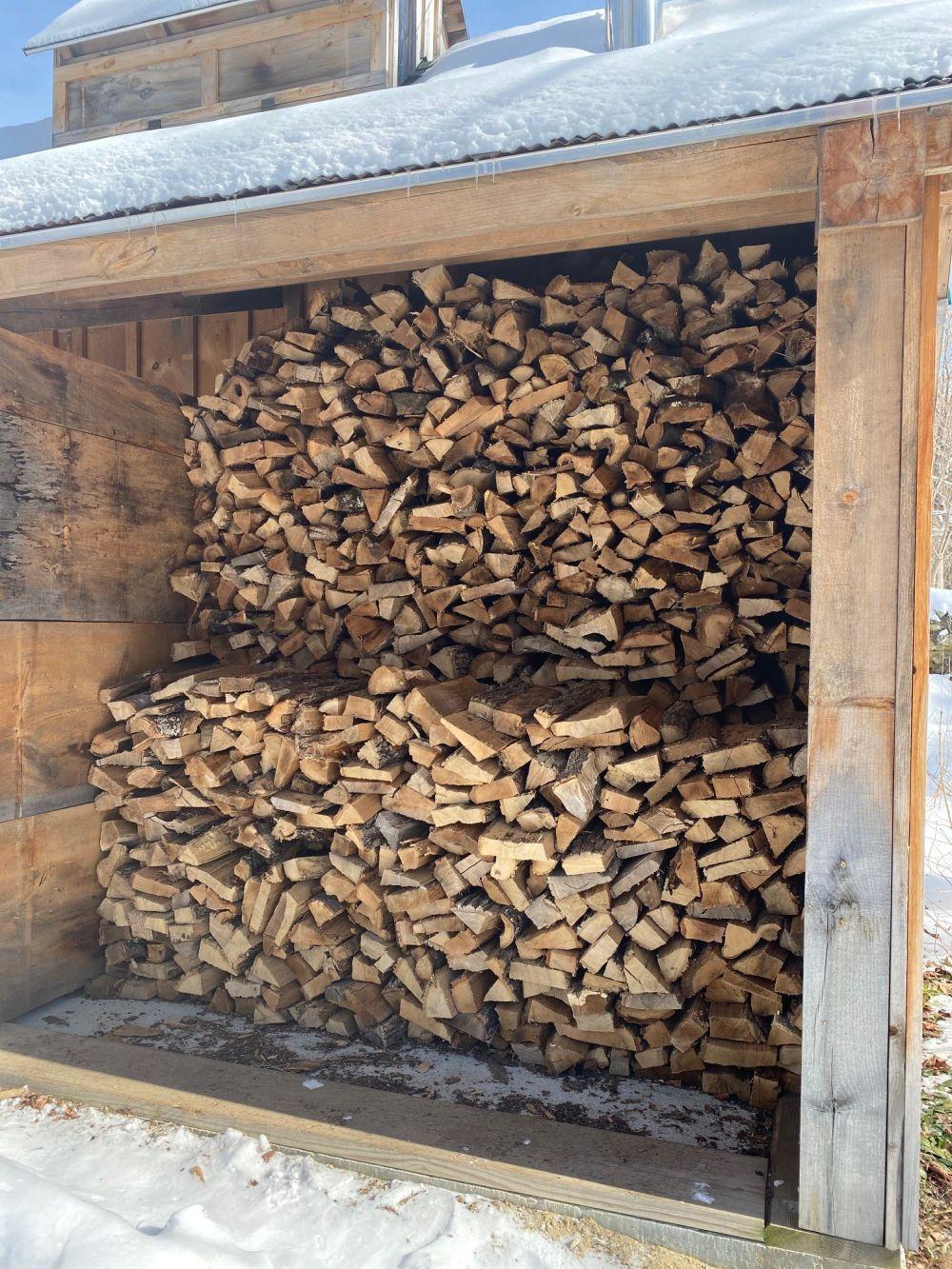
Heating with wood is also a lifestyle in keeping with our desire to be more self-sufficient. There is a lot to learn about safely making and burning firewood to get the best BTU bang for the buck. Our small Tree Farm provides us the opportunity to obtain 100% of our cordwood from our own backyard. Of course it requires significant labor, tools, machinery and skill refined by experience to remain efficient.
The woodshed gauge should read at least “half full” in February at Groundhog Day.
Cordwood chores are also a sensory experience: noise, sawdust, sweat, exertion… pine pitch, diesel fumes and chainsaw exhaust, the scent of fresh cut woodchips from the chainsaw and wood smoke swirling from the chimney from November to April. All winter, I move wood from woodshed to indoor wood rack to woodstove and remove ashes. One day in May, a potted plant returns to the stovetop and its over. Almost. The next six months requires periodic effort to stay ahead of schedule and allow time for cordwood to season.
In winter, we accumulate fresh logs from sporadic weekends logging: a supply of logs for the winter after next. In the woods, brush piles for bonfires built from limbs cut last winter remain covered by plastic tarps under the snow. Soon enough, maple sugar season will have us pitching even more wood at an alarming rate into the equivalent of a stationary wood-fired locomotive as we boil sap. We burn an average of three cords of clean, well-seasoned hardwood for home heating in the woodstove over six months. By comparison, we then burn six cords of fine-split softwood in the sugarhouse in eight weeks.
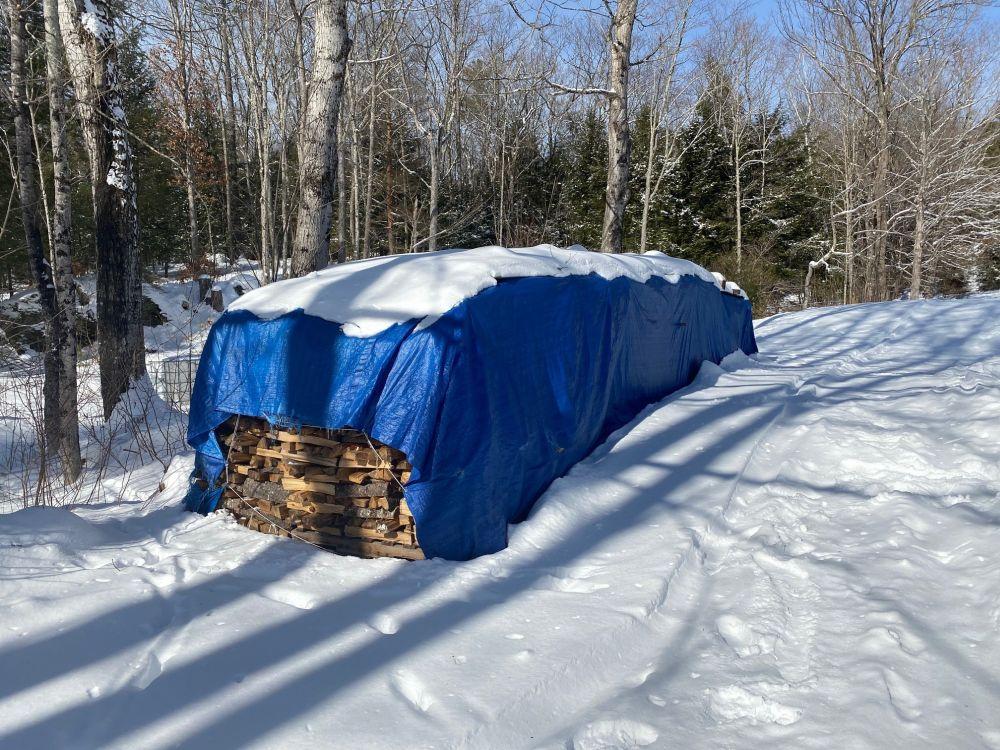
That amount of firewood requires a year-round approach. In winter, we fell and limb trees, stack brush, winch and then skid the logs downhill to the landing with a tractor. Logs stay free of dirt and mud and slide easily on frozen, snow-covered ground. Dirty logs dull chainsaws. In spring, we buck logs to stove lengths and stack them to dry . Summer and autumn is for splitting and hauling cordwood to the woodshed or the sugaring woodpile covered with plastic and a blue tarp. It’s rewarding exercise, more productive than lifting weights indoors I tell myself. At some point, I physically won’t be able to continue to do it. Cordwood- like raising kids – is for the young. Son-in-laws and ibuprofen help too.
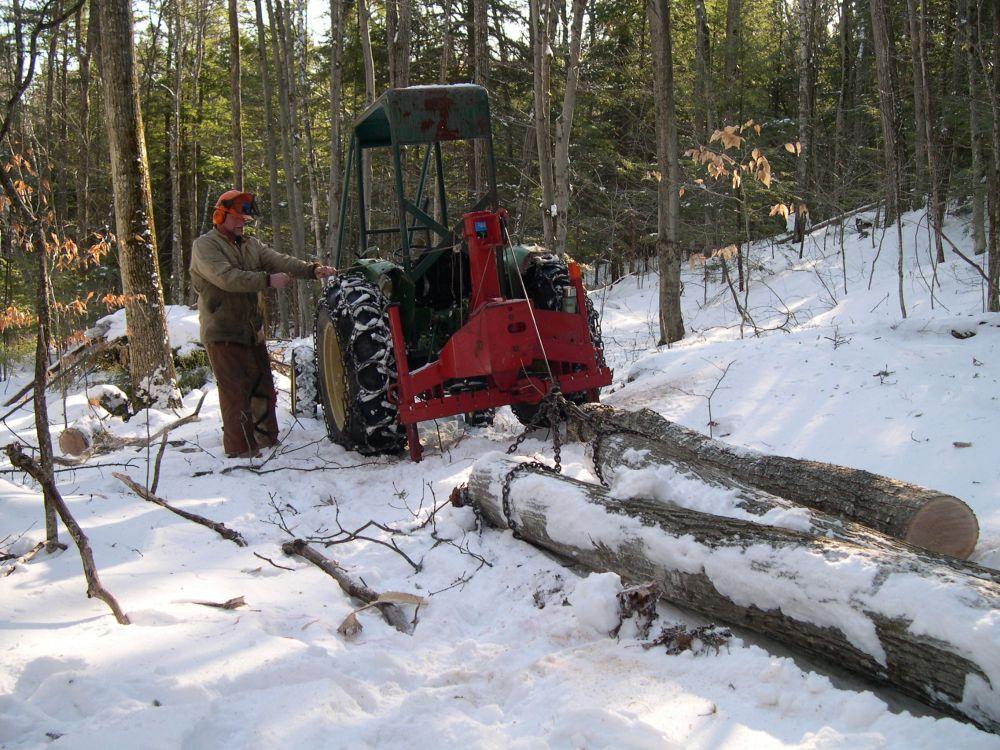
Which trees make best firewood?
We’re not growing any “pellet trees” — I’ve checked. Instead we grow cordwood. We harvest the crooked, poorly formed trees to favor high-quality saw logs, so-called “crop trees” in forestry terms. Removing trees with no potential to produce valuable lumber reduces competition for space and available sunlight. Weeding and thinning the forest creates small gaps and sunny openings increasing production of acorns, beechnuts and fruiting shrubs for wildlife and improves overall timber quality and growing conditions. We leave hollow live trees, standing dead snags and fallen logs for wildlife homes.
Dry hardwood logs in the firewood pile include red oak, white ash, beech and white birch. All are excellent firewood for winter heating when properly seasoned.
“Hardwoods” are broad-leaf, deciduous trees. Each have different heat attributes. I prefer cutting red and white oak, white ash, beech, birch and red maple for cordwood. Oak and ash are ring porous and split easily. Beech, birches and maple can be cross-grained and less so. Less common hardwoods make great firewood: hop hornbean, black cherry and apple. I do not cut sugar maples – against my religion. Oak requires a full year to season properly. Unseasoned “green” wood does not burn efficiently. It creates creosote build-up and can cause chimney fires. Some hardwoods do not make good firewood: elm, aspen aka “poplar,” basswood aka “linden,” brown ash and willow do not provide high BTUs. “Even the flames are cold” quipped one old-timer. Striped maple — an understory species — is never firewood: it has green chlorophyll in its bark similar to the supple dark twigs of aspen and birches. In general, fast-growing, sun-loving “pioneer” trees do not provide the heat output of slower growing, shade-tolerant trees. Oak and ash keep for years when stored properly. White birch and red maple start rotting with ground contact.
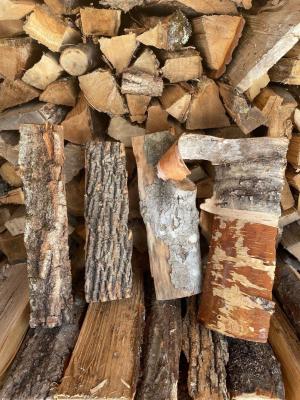
“Softwoods” have needles and cones - the conifers. Pine, hemlock, spruce and fir make valuable lumber but are not suitable for woodstoves due to creosote build-up and lower BTU output. Conifers burn quickly leaving no lasting coals. Softwoods are fine for the sugarhouse where a burst of quick heat boils sap and the chimney draws plenty of air. Hardwood provides better heat but is more valuable for home heating in my opinion. Having use for low quality hemlock or pine removed during thinning operations makes our maple hobby more virtuous. Not to mention pancakes and waffles.
No matter what kind of firewood, proper drying in the summer sun while maintaining airflow and keeping rain and snow off wood is critical. Firewood stored for a year under cover and off the damp ground on pallets helps our woodstove burn more efficiently. Cleaning the chimney at least annually is required and provides peace of mind.
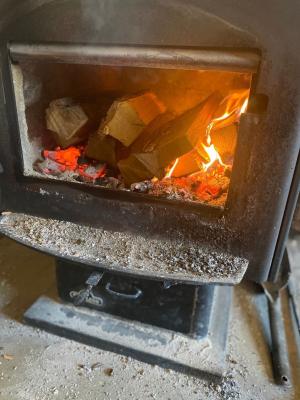
There are other important safety and legal considerations when burning wood for heat or ambiance — indoors or out. Local written fire permits are required for outdoor burning unless there is 2” or more of snow on the ground. When buying firewood, buy local to avoid transporting wood than can contribute to the spread of invasive, damaging forest pest insects and diseases.
As the days grow longer and tree shadows shorter, we look forward to spending time in the sugarhouse knowing we have an ample wood supply. Its early yet to speculate about next winter’s wood supply. In fact, it is time to get working on the winter after that.
